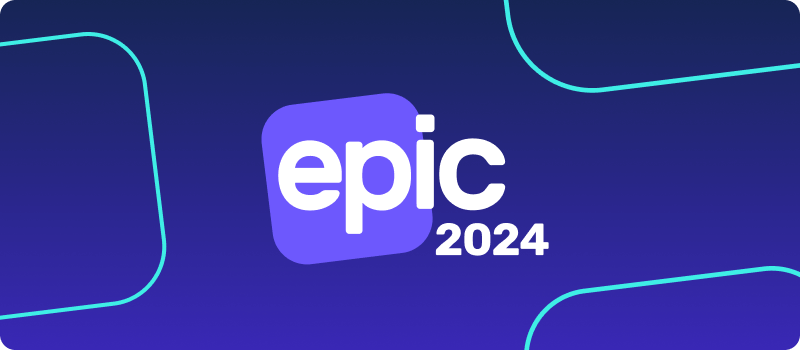A look at the technical realities behind AI developments in education

AI seems to be everywhere, and the market pressure to create AI products is possibly greater than any previous technological change. The education sector is far from immune. Generative AI, and the more familiar subset, the Large Language Model (LLM), is already finding its way into classrooms – whether welcomed or not – and quickly changing what learning might look like in the future.
Here at Education Perfect we have been developing and testing our own secure, safe and trustworthy AI-enabled features, which we’re excited to have announced this week. You can learn more about our new products in this Paper.
The fact is, each new application of AI in education – and the subsequent successful adoption of it – requires a delicate balance between innovation and responsibility. It’s essential to approach its use with caution and sensitivity to ensure that it aligns with the values and needs of all stakeholders involved. At EP, we are committed to ensuring our AI developments align with ethical standards and educational objectives, with transparency and accountability throughout. We have made sure to communicate openly about the capabilities and limitations of the AI model, and prioritised data privacy and security by embedding robust measures to protect sensitive information and ensure compliance.
Our studied and practical research methods
Intensive research related to AI’s use in education settings is underway across the globe. In the US, institutions like MIT and Stanford are exploring how to integrate AI into educational settings in an ethical, equitable, and safe manner. In Australia, the Australian Framework for Generative Artificial Intelligence in Schools has been developed to “guide the responsible and ethical use of generative AI tools in ways that benefit students, schools, and society”. Similarly, the UK have established guidelines and policies that promote the ethical deployment of AI in educational settings.
Naturally, frameworks and policies such as these have deeply informed and guided our approach to AI design and development. But it isn’t just academic researchers who should be informing AI’s development in education, it’s the people who will use it every day too. Educators, students, families, and other educational stakeholders all have a role to play in shaping AI applications that best serve the teaching and learning landscape.
Throughout the process of developing our own AI-based features, we’ve engaged in extensive discussions and research. We’ve surveyed teachers and tested early prototypes with students across Australia and New Zealand. We’ve had deep conversations with CIOs and Directors of Education in Canada, and have also considered and consulted emerging and evolving research and policies from around the globe.
From all of this, we believe that when it comes to using AI tools in the classroom, it must:
- Support human interaction and cooperation, which is so central to the educational experience
- Empower educators to facilitate learning
- Support learning by offering timely and specific feedback and prompting students to think critically
- Promote student engagement and independent learning
- Have security and data privacy at its core.
Teachers and students should come first here, supported by AI, rather than an equal partnership. So, we set about developing an LLM that could bolster learning and teaching, and allow schools and teachers to do more than ever before.
For our first AI-based feature, we have taken a more integrated approach providing focused, personalised feedback on the student’s long-answer responses. Behind the scenes, the AI algorithms analyse vast amounts of language data, generate contextually relevant responses, and provide personalised and interactive learning opportunities for students.
We have very deliberately picked out styles of interaction that reinforce positive learning behaviours and minimise opportunities for distraction or inappropriate use from students. Our system encourages students to try harder and look for deeper answers in the material they’re learning, and then rewards them when they do. This has required a nuanced understanding of pedagogical principles, and a commitment to empowering educators and students rather than replacing them. We’re extremely grateful for all the input we’ve received from teachers and students over the last 6 months, which has guided us as we’ve developed this.
Our iterative AI development lifecycle
The inherent variability in AI outputs can sometimes make working with them more like riding a horse than driving a car. Our development teams have had to constantly adapt, anticipate and respond to the unexpected. Given that our model required continuous iterations and tinkering, our development approach was less linear and resembled more of an adaptive cycle, where feedback from educators, developers and other stakeholders guided each iteration of the design process – ensuring that we were adaptive and responsive to the unique needs of the educational landscape. This approach allowed us to address the challenges inherent in AI and refine the AI model based on real-world usage and feedback.
We also actively sought out new research and insights in the field of AI in education, integrating emerging best practices into our development process.
Today, our product, EP’s new AI Powered Feedback Tool, has been thoroughly field test and refined and we believe it’s at a point where it can effectively support teaching and learning objectives while upholding ethical standards and promoting student success.

Addressing the cost challenges
Delivering these features at an affordable price point for teachers and students has been challenging. LLMs are resource-intensive to run, requiring substantial computational power and infrastructure. As a result, finding a viable commercial model that works for schools, while keeping costs manageable, has been a primary focus.
It’s important to emphasise to schools the significant difference in running costs between LLMs of varying sizes and capabilities. While it may be appealing to opt for a freely available model, we have spent considerable time and resources ensuring the education-specific capabilities of our AI learning companion bring valuable enhancements – and support beyond what more generalised models can provide.
We’ve been working to develop a pricing structure that balances affordability with capability. However, achieving this requir
es careful optimisation of our LLM to ensure it can be cost-effective without compromising performance. We are dedicated to making our LLM-based solutions accessible to schools while bringing realised value to the learning environment.
The future of AI with Education Perfect
Students of today will be working in a future where AI is the reality. We’re excited to be at the forefront of this change, responsibly guiding that journey – not only by exposing students to this transformative technology, but also by developing a safe and effective AI tool that significantly contributes to improving their learning outcomes.
This is just the beginning of Education Perfect and AI’s journey too. We look forward to building upon our own learnings and AI foundations to continually improve, refine, perfect and grow the AI-enabled tools on our leading platform. For more information on EP’s new AI Powered Feedback Tool, please click here.



